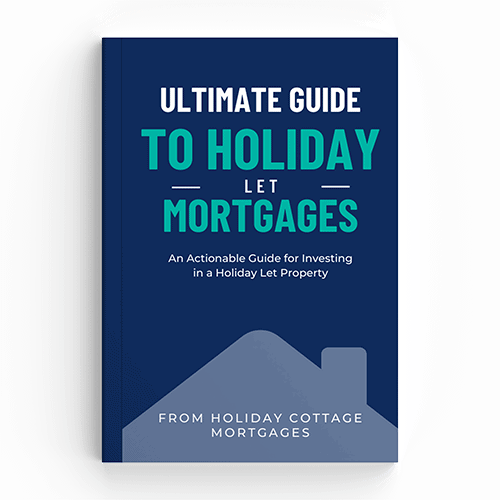In short, yes you can. Within the holiday let mortgage industy, this type of transaction is known as a “holiday let to buy” and is a transaction that can help you simultaneously convert your existing residential home into a holiday let whilst buying your next residential house.
What does holiday let-to-buy mean?
The term ‘holiday let-to-buy’ describes a specific situation that some of our customers find themselves in; a person decides to move home and, instead of selling their property, converts it into a holiday let property, the aim being to take advantage of the potentially excellent financial gains that holiday lets have the potential to generate. The question is, how do the finances work – and that’s where we come in! Holiday Cottage Mortgages are experts at navigating these complex mortgage transactions and have successfully helped many clients in this position.
How does it work?
These specific types of mortgage transactions can be rather complex and usually involve the onward purchase of your new main residence. It’s important to note that mortgage lenders want to see that you’re actively in the process of buying a new property, not moving out of your home to just rent somewhere new (more information on this later).
The typical situation looks like this:
- The customer begins the process to buy their new residential home.
- Simultaneously, the customer arranges a holiday let remortgage on their existing home, to convert it into a holiday let and raise additional funds which form the mortgage deposit for their new purchase.
These two processes must run at the same time, so that both mortgage completions happen simultaneously. Let’s have a look at some working examples:
Existing residence:
| Value | £650,000 |
| Existing residential mortgage | £200,000 |
| Proposed new holiday let mortgage (which will be used to clear the existing debt and raise new capital) | £450,000 |
| Capital raised for the mortgage deposit | £250,000 |
New residence:
| Value | £800,000 |
| Mortgage deposit (from the holiday let transaction) | £250,000 |
| New residential mortgage required | £550,000 |
So, in words, you remortgage your existing home with a new holiday let mortgage; settle the existing loan of £200,000; and borrow an additional £250,000 to use as the deposit for your onward residential purchase, against which you will raise a new residential mortgage of £550,000. The end result is that you own two properties: your new home and a holiday let.
Please note, you will need to ensure that you have sufficient funds to cover costs including:
- Stamp duty.
- Transaction fees including broker fees, lender fees, legal fees, and surveys.
- Furnishings and repairs for the new holiday let and main residence.
- And so on…
A word of caution
By completing a holiday let-to-buy transaction you will be increasing your asset base by owning two properties, but you will also be taking on two mortgages. Please take extra care when planning such a move and make sure you have a financial plan in place in the event your income should change or the holiday let is forced to be closed and always consult your accountant before proceeding.
What do you need to know about the mortgage process?
As mentioned, it’s crucial that both mortgage transactions are timed to complete simultaneously. This is because the holiday let mortgage lender will require proof that the cash raised against your residential property (the capital raised for your mortgage deposit), is being legitimately used in the way you have stated and not something else, such as investing in a business.
It’s also important to note that once you complete on the holiday let mortgage, you must immediately move out of the property; it is a breach of your mortgage contract to live in the mortgaged holiday let, even if it’s ‘only’ in the short term.
Handy tips for the mortgage application

As we’ve successfully helped plenty of customers experience as smooth a transaction as possible, here’s our advice before you start the mortgage process:
- Use the same broker (such as HCM) for both mortgages! You want both mortgages to run concurrently and complete at the same time, which is much easier if the same mortgage broker is working on both, as they will be aware of the importance of timings and know the status of both transactions.
- Make sure that your residential mortgage lender is happy to work on an application where there is a new holiday let property involved. Many lenders will not like this as holiday lets are often considered to be business assets and as a result, there are far fewer lenders who accept this type of situation. A number of lenders will also want to assess your affordability by examining your existing costs plus the costs of your new holiday let mortgage, to check that you have sufficient funds to proceed.
Why can’t you move into a rented property?
Most holiday let mortgage lenders will want assurance that you have a new permanent home to live in after the transaction completes. This is because the lender will be concerned that you might use the holiday let mortgage to raise capital and then after a few months leave your rented accommodation and move back into the holiday let property (what was previously your residential home).
The problem is that there’s now a bigger mortgage on the first property than there was initially, that might not have been raised through a regular residential mortgage process. So, if the property doesn’t generate income from being rented out as a holiday let, there’s the risk that you can no longer afford your monthly mortgage payments and default on the mortgage.
Timing is everything!
It might sound complicated but the most important thing to remember is that timing is key. But we can’t also forget that along with both mortgage transactions happening simultaneously, they must both succeed in the first place. For this reason, it’s essential to work with an experienced mortgage broker like HCM.
Imagine this: you apply for both mortgages but while the new residential mortgage is approved and offered, the holiday let mortgage gets delayed due to an underwriting issue. Both mortgages are now at risk of falling through.
To avoid this problem, it’s vital to consult a mortgage expert who specialises in such applications and can bring everything together. For more information get start your free initial assessment by click the button below:

Get your copy today!
Free eBook: The Ultimate Guide to Holiday Let Mortgages
How much can you borrow?
Use our free mortgage calculator created by the UK's leading holiday let mortgage specialists, and find out how much you can borrow today!
FCA disclaimer
The information contained in this article is accurate at the time of writing, based on our research. Rules, criteria and regulations change all the time and so please speak to one of our Consultants to confirm the most accurate up to date information. Nothing in this article constitutes financial advice. You understand that by clicking any external links on this page that you will be leaving the website of Holiday Cottage Mortgages and we cannot be held responsible for the content of this external website. Please always consult your accountant or solicitor for all financial, taxation or legal matters.